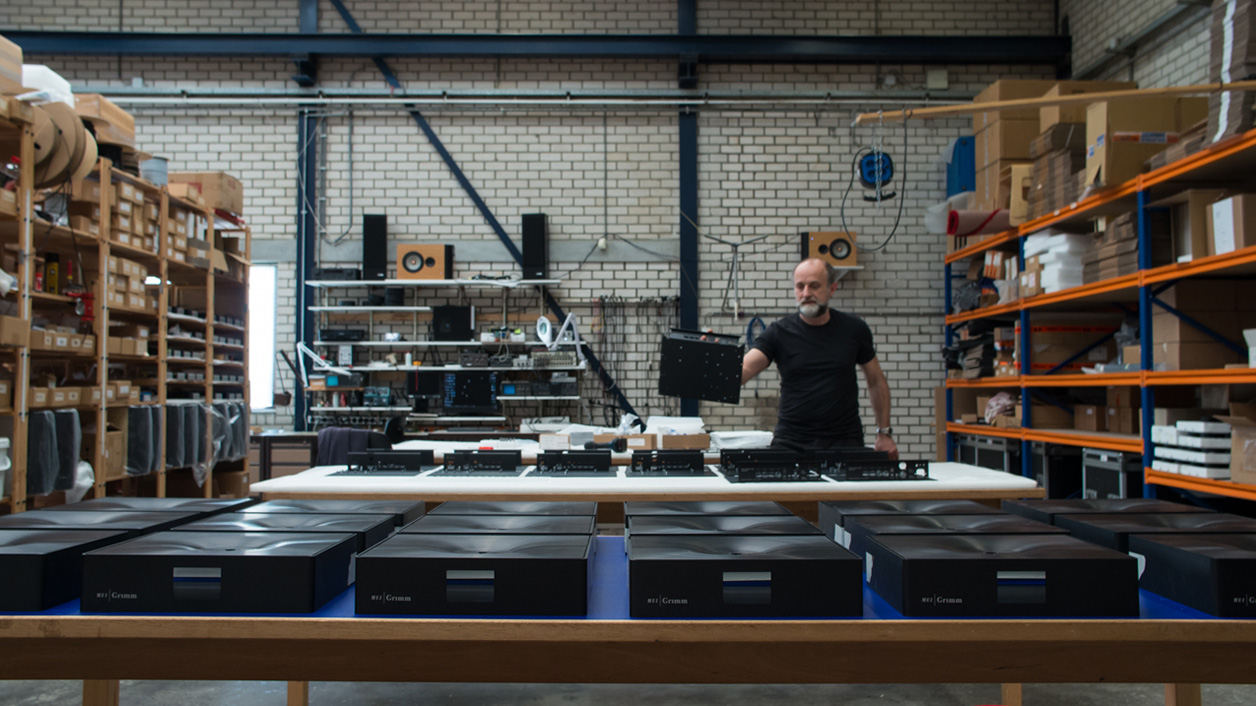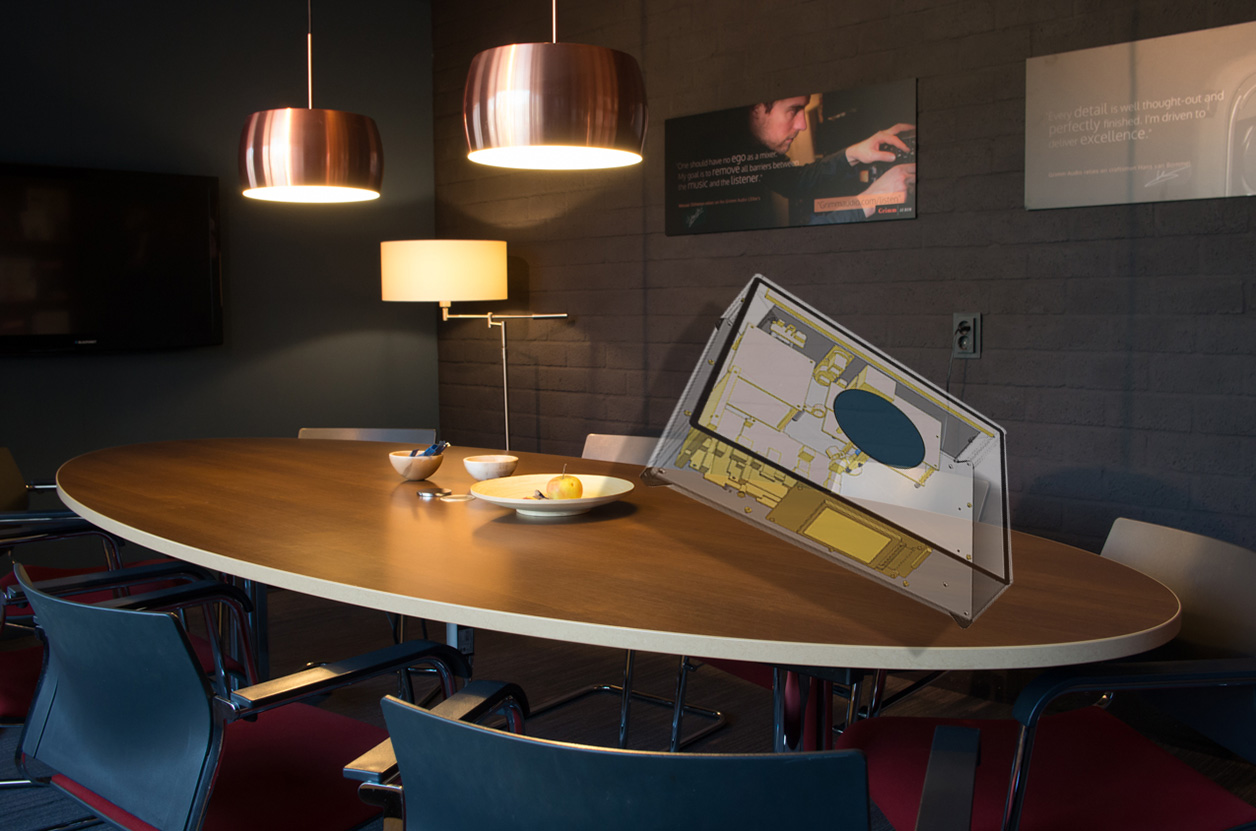Because Eelco is an avid radio head—analog radio that is—he embedded an analog FM option inside the MU1. This FM input is backed by a chip from Catena, an offshoot of Philips' radio department some time ago. In an upcoming software update, the Catena chip will be used to offer a full-blown FM tuner. This is the hub concept in action. Talking of things in the wind, the MU2 will use the same FPGA also for D/A conversion and add an analog input for vinyl heads. Owners of the MU1 won't have to worry. The upgrade path to MU2 will mirror the successful earlier upgrade paths within the LS1 speaker range.

Grimm wanted to offer a single device to do all line-level audio tasks without the hassle of many current solutions. The big strength thus success of CD was simplicity. Load disc, press play. Done. Streaming with laptops, messing with OS upgrades, cables, player software and more is always problematic. Grimm's desire for user simplicity led them to Roon. Over the last few years Roon has proven to be a stable user-friendly ecosystem. Further simplicity comes from Linux as the MU1's operating system loaded with Grimm drivers for full control over the script. To maintain said control, team Grimm categorically refrained from using software libraries to write their own code from the ground up. That's what differs strategically from competing machines. On the hardware side, only the NUC aka Next Unit of Computing and SSD are purchased. The rest was developed in house. In Grimm's Eindhoven shop they spent a lot of time and effort perfecting a switching power supply which became a 2-storied affair. It is prepped for future expansions and was developed using jitter measurements on the audio clock. That internal power supply is so good that Grimm advocate a generic power cord since boutique versions will have very little effect on the MU1's performance. All in, it took our Dutch team 5 years to meet their project's advanced demands.
Grimm use their extremely accurate crystal clock not just for the FPGA's master mode. When a CD transport connects, the same oscillator clocks that player to result in a complete synchronous system. We would experiment with this and run a CD transport through the MU1 then into the DAC versus straight to DAC. To further synchronize source to MU1, Grimm opted for a frequency-locked loop aka FLL, not a more common phase-locked loop or PLL. Where perfect phase lock is unnecessary like in a hifi setting, the short latency of an FLL is irrelevant and one enjoys superior performance including instant switching between sample rates with continuous jitter suppression. As a result, there is no audible difference between a CD ripped to internal SSD or the original CD played from a connected transport. Of course that transport should be of good quality.
 Grimm meeting room with superimposed MU1 render
Grimm meeting room with superimposed MU1 render
Talking with Eelco Grimm and Guido Tent was inspiring. Besides their technical skills and education, they share the same musical interest we do. Which brings us to our listening sessions. With two DAC options on hand, we first connected the MU1 to the TotalDAC D1 Direct in NOS mode so Grimm's resampling wouldn't be overwritten by offboard upsampling. This R2R ladder now direct-coupled to an Audio Note Meishu integrated with WE 300B. As we still had Taiko Audio's panzerholz platforms, the amp sat on one. Speakers on duty were our trusty 109dB efficient Avantgarde Duo Omega with additional BAT super tweeters. Sources were Tidal and Quobuz, PS Audio's PerfectWave transport for physical CD, a 3TB USB hard disk for external storage and the MU1's own SSD. All except for the PWT were under Roon control. Following Grimm's advice, we used a generic power cord but did check for correct polarity with a Kemp polarity checker.
